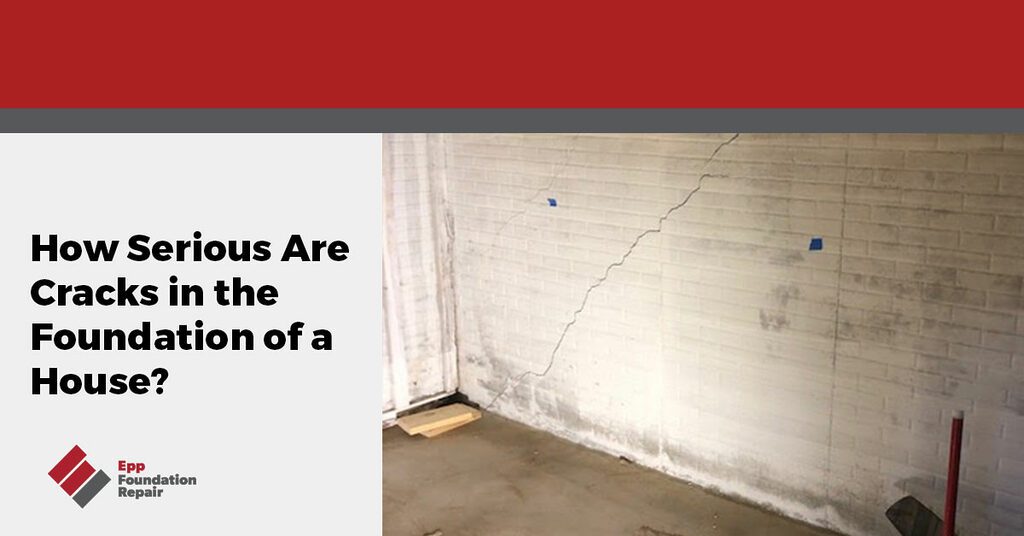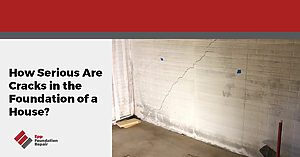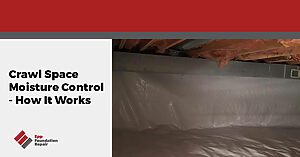Cracks in a house’s foundation vary in severity. While some may only require a small patch job, others can threaten the structural integrity of your home. With that in mind, it is vital to determine which cracks are causes for alarm and when to contact a foundation repair specialist. This article will review what causes foundation cracks, the types of cracks, how to determine if a crack is serious, and other signs of foundation damage.
Why Do Foundations Crack?
Foundations can crack for various reasons, ranging from natural settlement to structural issues. Here are some common causes of foundation cracks:
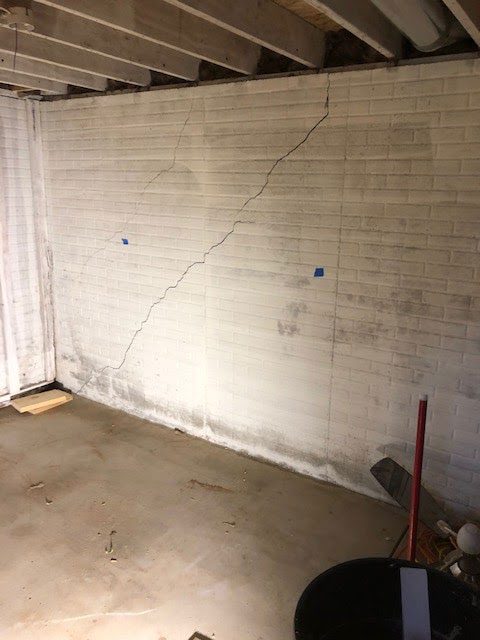
- Natural Settlement – When a house is built, the structure’s weight causes the soil beneath the foundation to compress and settle over time. This natural settlement can lead to minor cracks in the foundation as it adjusts to the changing soil conditions. Small hairline cracks are often expected and may not indicate a serious structural problem.
- Expansive Soils – Certain soil types, such as clay soils, can expand and contract significantly with changes in moisture levels. This cyclical movement exerts pressure on the foundation and can cause foundation movement and cracking over time.
- Hydrostatic Pressure – Hydrostatic pressure, or the pressure exerted by groundwater against the foundation, can cause foundation cracks and the bowing of walls, particularly in areas with poor drainage or high water tables.
- Tree Roots – Large tree roots near the foundation can disrupt the soil beneath the foundation, leading to structural damage over time. They can also exert pressure on the foundation walls, causing them to crack or shift.
- Poor Construction Practices – Improper construction techniques, such as inadequate reinforcement, improper concrete mix, insufficient soil compaction, or insufficient drainage, can compromise the foundation’s integrity and lead to cracking. Poorly constructed foundations may be more susceptible to cracking and other structural issues.
- Extreme Weather Conditions – Extreme weather events like droughts, floods, earthquakes, or annual freeze-thaw cycles can damage the foundation and contribute to cracking. For example, prolonged droughts can cause soil shrinkage and settlement, while heavy rains can lead to soil erosion and foundation movement.
- New Construction – Excavation and construction done near your home’s foundation can cause changes in the soil below your foundation, leading to uneven settling of your house and cracks in your foundation. Home additions, especially that of another story, can put excessive weight on the foundation and lead to cracking or structural failure.
What Are the Different Types of Foundation Cracks?
About five main types of cracks can appear in your home’s foundation, and they can be narrowed down into two categories: structural and non-structural cracks. Structural cracks threaten the integrity of your home and can eventually lead to foundation failure, making your home unsafe. Non-structural cracks, on the other hand, will not compromise the safety of your home, although they can pose a risk for leaks and future foundation problems if left unattended. Let’s review each type of crack and its significance.
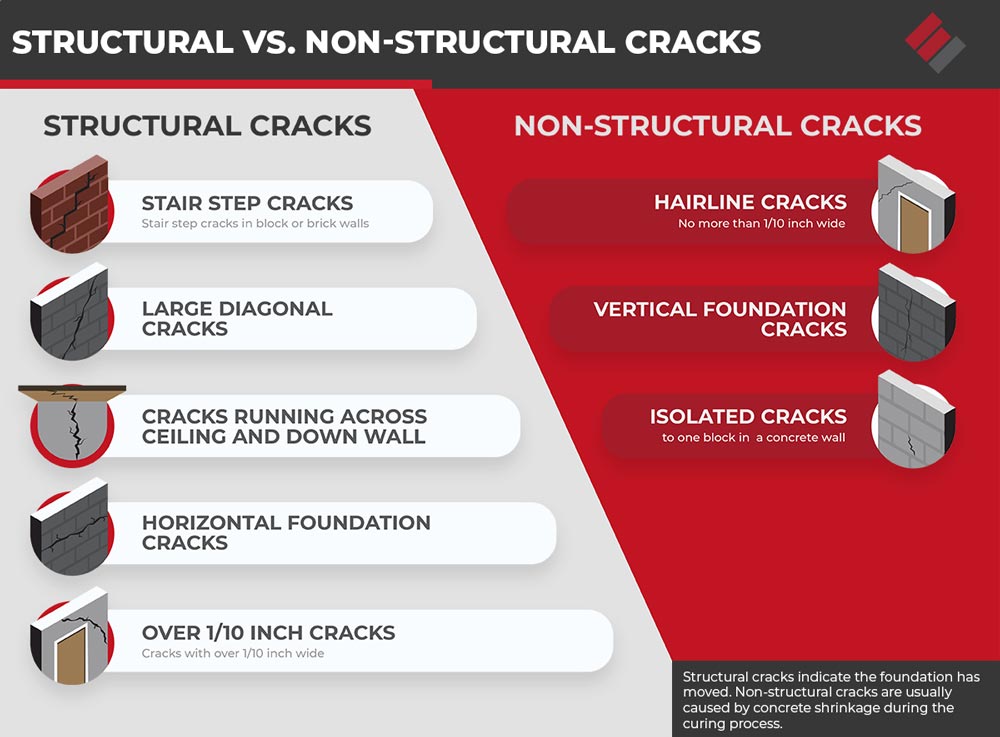
- Stair Step Cracks – Stair step cracks are common amongst block foundations and are usually a tell-tale sign of foundation failure. This type of crack often results from differential settlement of your foundation or excessive moisture in the surrounding soil.
- Large Diagonal Cracks – A small diagonal crack is not always a sign of structural issues when isolated and does not grow over time. However, if the crack enlarges in width or length over time, is wider on one end than the other, or you start to notice water penetration, this could signal a structural issue and should be addressed by a professional.
- Vertical Cracks – Vertical cracks are usually not a structural issue and result from the concrete’s curing process and the home’s natural settling. However, if you begin to notice multiple vertical cracks along the same wall, widening of the existing crack, or water leakage, it is time to call a foundation repair specialist.
- Horizontal Cracks – Horizontal cracks usually signal structural issues and should be repaired immediately. These cracks typically occur because of differential settlement of the foundation and hydrostatic pressure. You may experience worsening leaks and the foundation wall bowing inward if left unaddressed.
- Hairline Cracks – Hairline cracks are thin cracks no more than 1/10 of an inch wide. They are generally cosmetic and result from the concrete’s curing process and the natural settlement of your home. They should still be sealed to prevent any means of water penetration.
How Do You Know If a Foundation Crack in Your Home Is Serious?
Structural cracks are always serious and warrant immediate repair. Determining whether a foundation crack in your home is structural requires careful observation and evaluation. Here are some factors to consider when assessing the severity of a foundation crack:
- Width and Length – Smaller cracks are generally less concerning than larger ones. Measure the width and length of the crack using a ruler or tape measure. Cracks wider than 1/10 of an inch or longer than a few feet may indicate more significant structural issues.
- Direction – The direction of the crack can provide clues about the cause and severity of the problem. Vertical cracks are often less concerning than horizontal cracks, which may indicate that your home is settling unevenly or that the soil around your home lacks sufficient drainage.
- Location – Pay attention to where the crack is located concerning the foundation and the rest of the structure. Cracks that extend from the foundation walls into the house’s interior, particularly near doorways or windows, may be more concerning than isolated cracks in the exterior walls.
- Depth – Evaluate the depth of the crack by examining how far it extends into the foundation wall. Shallow, surface-level cracks may be less concerning than deep, penetrating cracks that extend through the entire thickness of the wall. Call a repair specialist if you can stick a coin partway into the crack.
- Associated Symptoms – Look for other signs of structural damage or distress, such as uneven floors and sticking doors or windows. These symptoms may indicate uneven settling of the home’s foundation.
- Moisture – Examine the area around the crack for signs of moisture or water intrusion, such as dampness, staining, or mold growth. Moisture-related issues can exacerbate foundation problems and should be addressed promptly to prevent further damage.
Other Signs That Your Home’s Foundation Is Damaged
If your home’s foundation has structural problems, you will notice more than cracks in the foundation. Check if you have experienced any of these symptoms:
- Increasing difficulty opening particular doors and windows.
- Cracks in the walls, floor, or ceiling, specifically on the first floor of your home.
- Gaps or diagonal cracks around windows and doors.
- Sloping floors and gaps between the floors and baseboards.
- Gaps between the walls and ceiling.
- Torn or wrinkled wallpaper.
- Bowed walls.
- Chimneys or porches pulling away from the house.
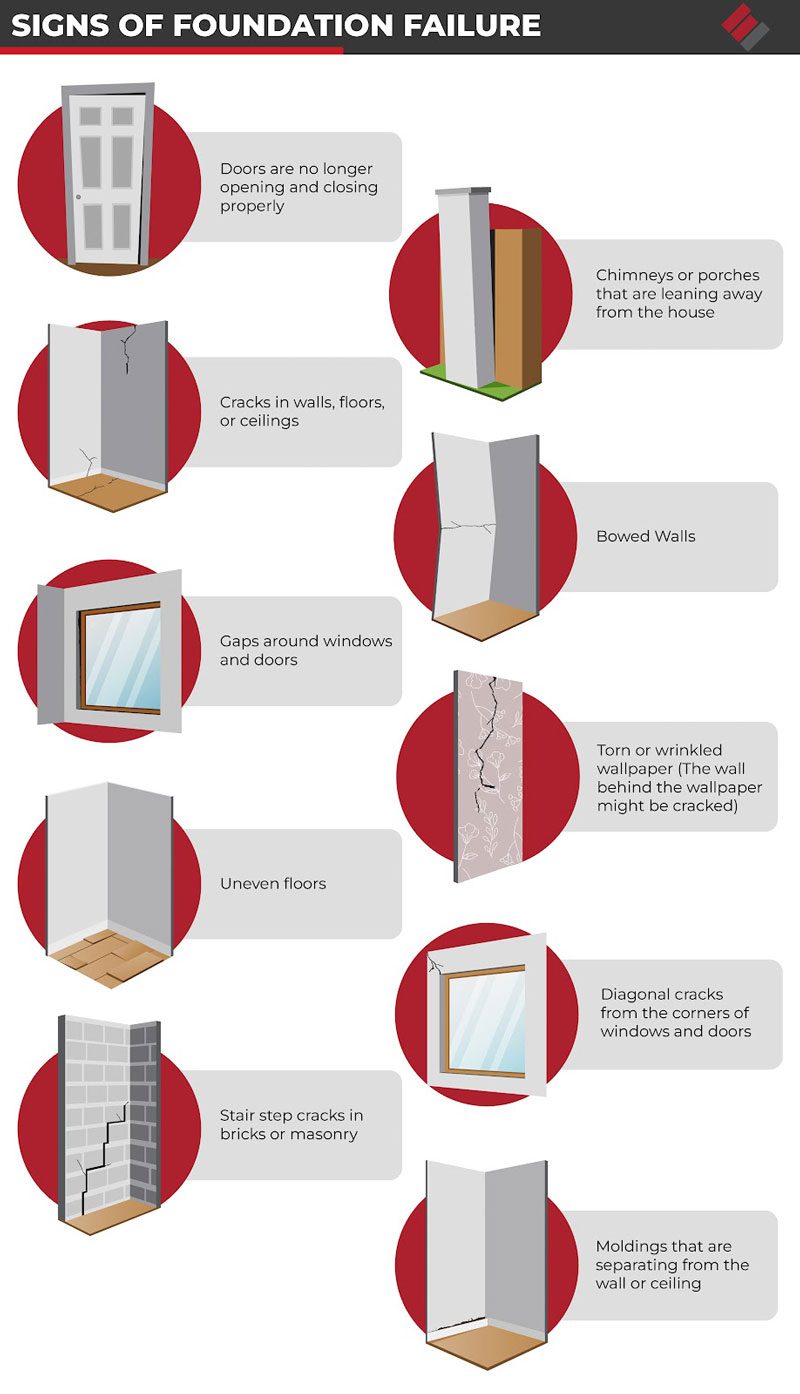
Call a foundation repair specialist for an inspection if you notice any of these symptoms.
Is It Safe to Live in a House with a Cracked Foundation?
If the crack is non-structural, your family should not worry about the house crumbling down. However, structural cracks require immediate attention since they can eventually cause your home to be deemed unsafe. But don’t become overly anxious by cracks in your home’s foundation. Even serious structural cracks do not have to send you and your family packing. A specialist can restore your home’s structural integrity for many decades with the appropriate foundation repair methods.
If you have concerns about a foundation crack or notice any signs of structural damage, schedule a consultation with our qualified foundation specialists. We can assess the crack, identify the underlying cause, and recommend appropriate repairs. We service Nebraska, Iowa, Kansas, and Missouri.

